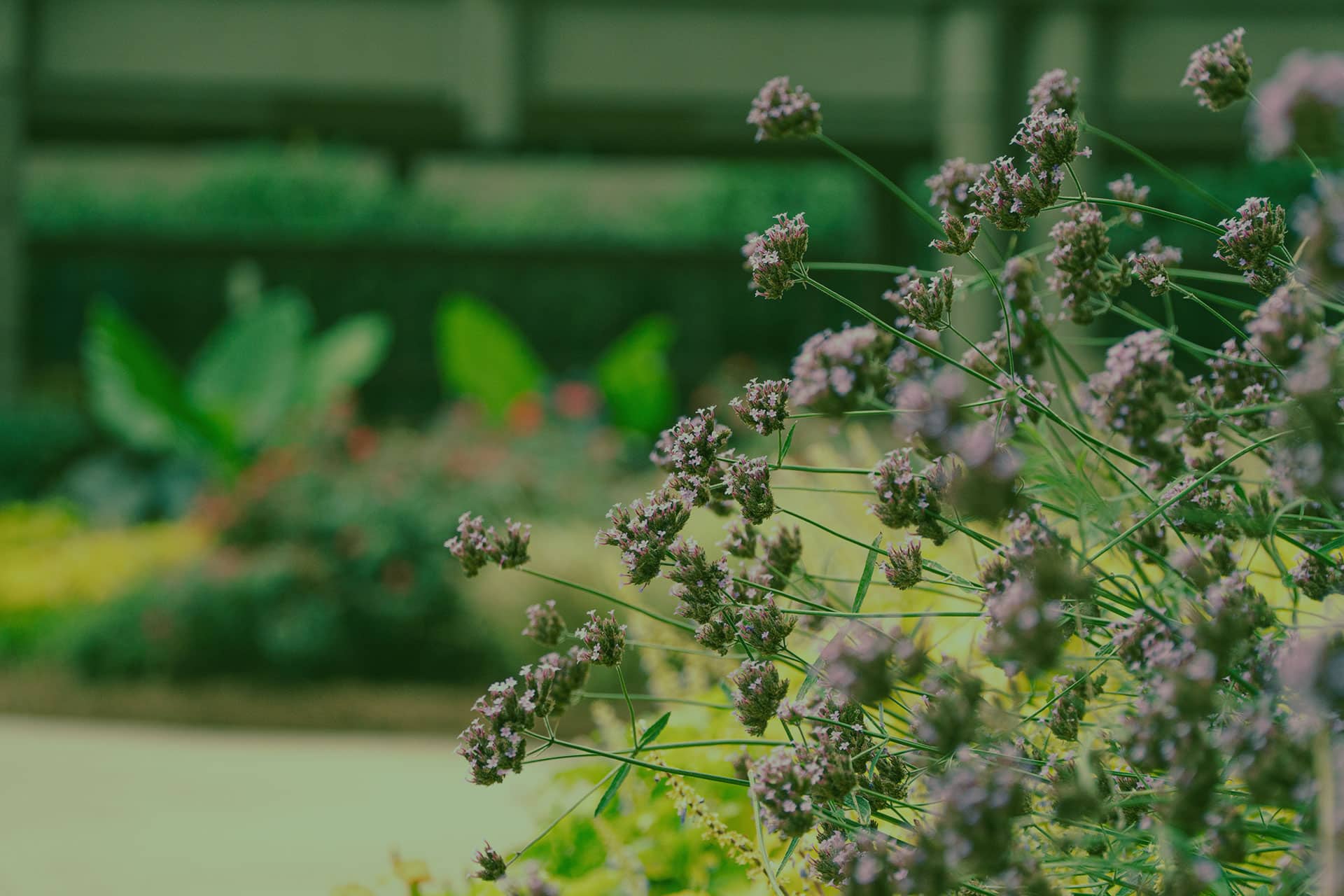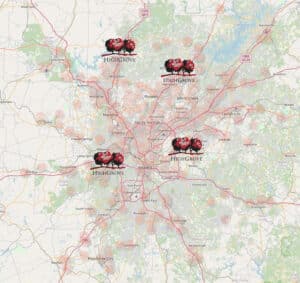Stormwater runoff can be a problem, especially in commercial areas or downtown areas where the removal of tree and ornamental plants, the addition of impervious surfaces and soil compaction impact the movement of water in an environment.
This is why stormwater is listed as one of the leading sources for water pollution. And stormwater issues usually increase with more urbanization and development. For the past two decades, the Environmental Protection Agency says the rate of land development has been twice the rate of population growth.
For that reason, cities continue to implement water quality protection strategies. Different stormwater solutions are used at different scales to provide local waterbodies the greatest degree of protection.
Reduce Runoff: 10 Low-Impact Development Ideas

For Atlanta commercial properties, we use a variety of low-impact development techniques to improve stormwater management on your property. Here are 10 to start:
Green Roofs
A green roof starts with a waterproof membrane that is topped with a growing medium in which vegetation is planted. Green roofs may also include additional layers, such as root barriers, drainage strategies and even irrigation systems. As opposed to traditional metal or asphalt roofs, green roofs absorb, store and then evapotranspire precipitation. Through this process, they act as a stormwater management system and reduce overall runoff, preventing sewer overflow.
Buildings must be able to support the extra weight of a green roof. And green roofs do require some maintenance to retain their stormwater management functions.
Infiltration/Flow-through Planters
There are landscape features that are designed to capture and infiltrate runoff. Infiltration is the process through which stormwater runoff penetrates into the soil from the ground surface. Flow-through planters, which can be located next to a building or near parking areas or sidewalks, collect runoff during a storm event and release it into the soil by infiltration.
They provide green spaces in tightly confined urban areas that need stormwater capture and treatment.
Stormwater Art
A sculptural downspout can be an aesthetically pleasing way to direct water from rooftops to driveways, sidewalks or underground pipes that lead to sanitary sewer systems or storm sewer systems.
Swales
 A swale is a low tract of land, especially one that is moist or marshy. The term can refer to a natural landscape feature or a human-created one. Artificial swales are often designed to manage stormwater runoff, filter pollutants and increase rainwater infiltration.
A swale is a low tract of land, especially one that is moist or marshy. The term can refer to a natural landscape feature or a human-created one. Artificial swales are often designed to manage stormwater runoff, filter pollutants and increase rainwater infiltration.
Other benefits include the fact that they are designed to trap particulate pollutants (suspended solids and trace metals), promote infiltration and reduce the flow velocity of runoff.
Disconnected Downspout and Splash Basin
Downspouts are commonly connected to a sewer system, but the cumulative effect of thousands of connected downspouts can increase the water volume entering the sewer. Disconnected downspouts separate roof downspouts from the sewer system and redirect roof runoff away from impervious surfaces and to, in this case, a splash basin.
The splash basin is a shallow, landscaped area designed to filter out pollutants and reduce runoff volume. Maintenance of the area is similar to other landscaping, such as periodically removing accumulated leaves and debris.
Curb Cuts
Curb cuts allow stormwater to enter a garden at specific points along a curb, concentrating runoff both in velocity and volume. Since curb cuts channel water flow, their design requires careful attention. They should be spaced as frequently as possible to distribute the water flow evenly.
Overflow Inlets
Overflow inlets are system fail devices that are used to direct runoff and debris overflow during large storms. They can be used to drain excess rain and ground water from paved streets, parking lots, sidewalks and roofs.
Catch Basin
A catch basin is a cistern located at the point where a street gutter discharges into a sewer. It is designed to catch and retain matter like coarse sediment that would not pass readily through the sewer, but it allows surface water runoff to enter the stormwater conveyance system.
By trapping sediment, the catch basin prevents solids from clogging the storm sewer and being washed into receiving water.
Porous Paving
 Permeable pavement allows for the percolation of stormwater to drain through porous pavers to a stone reservoir underneath. The reservoir temporarily stores surface runoff before infiltrating it into the subsoil. Runoff is thereby infiltrated directly into the soil and receives some water quality treatment.
Permeable pavement allows for the percolation of stormwater to drain through porous pavers to a stone reservoir underneath. The reservoir temporarily stores surface runoff before infiltrating it into the subsoil. Runoff is thereby infiltrated directly into the soil and receives some water quality treatment.
When properly constructed, porous pavement is a durable and cost competitive alternative to conventional asphalt or concrete.
These pavers do require some occasional maintenance, such as checking for sediment accumulation to ensure water flow through the pavers isn’t restricted and sweeping the pavement with a vacuum to maintain infiltration rates.
Trees
Trees and forests improve stream quality and watershed health primarily by decreasing the amount of stormwater runoff and pollutants that reach our local waters. Trees and forests reduce runoff by capturing and storing rainfall in the canopy and releasing water into the atmosphere through evapotranspiration.
In addition, tree roots and leaf litter create soil conditions that promote the infiltration of rainwater into the soil. This helps to replenish our groundwater supply and maintain streamflow during dry periods.
The presence of trees also helps to slow down and temporarily store runoff, which further promotes infiltration and decreases flooding and erosion downstream. Trees and forests reduce pollutants by taking up nutrients and other pollutants from soils and water through their roots and by transforming pollutants into less harmful substances. In general, trees are most effective at reducing runoff from smaller, more frequent storms.
In addition to these stormwater benefits, trees provide a host of other benefits such as improved air quality, reduced air temperatures in summer, reduced heating and cooling costs, increased property values, habitat for wildlife and recreation and aesthetic value.
Does Your Stormwater Management Plan Have Holes?
There are so many low-impact development approaches to runoff management that it can be challenging to figure out which one is going to work best on your property.
Give us a call at 678-298-0550 or use our simple contact form. In the meantime, download our Complete Guide To Water Management below. This FREE e-book will help you create a commercial landscape irrigation and stormwater management plan that maximizes your property’s efficient water use.
HighGrove Partners can help educate you on various stormwater solutions in the Atlanta area and come up with a specific solution for you.
Last modified: June 3, 2021




